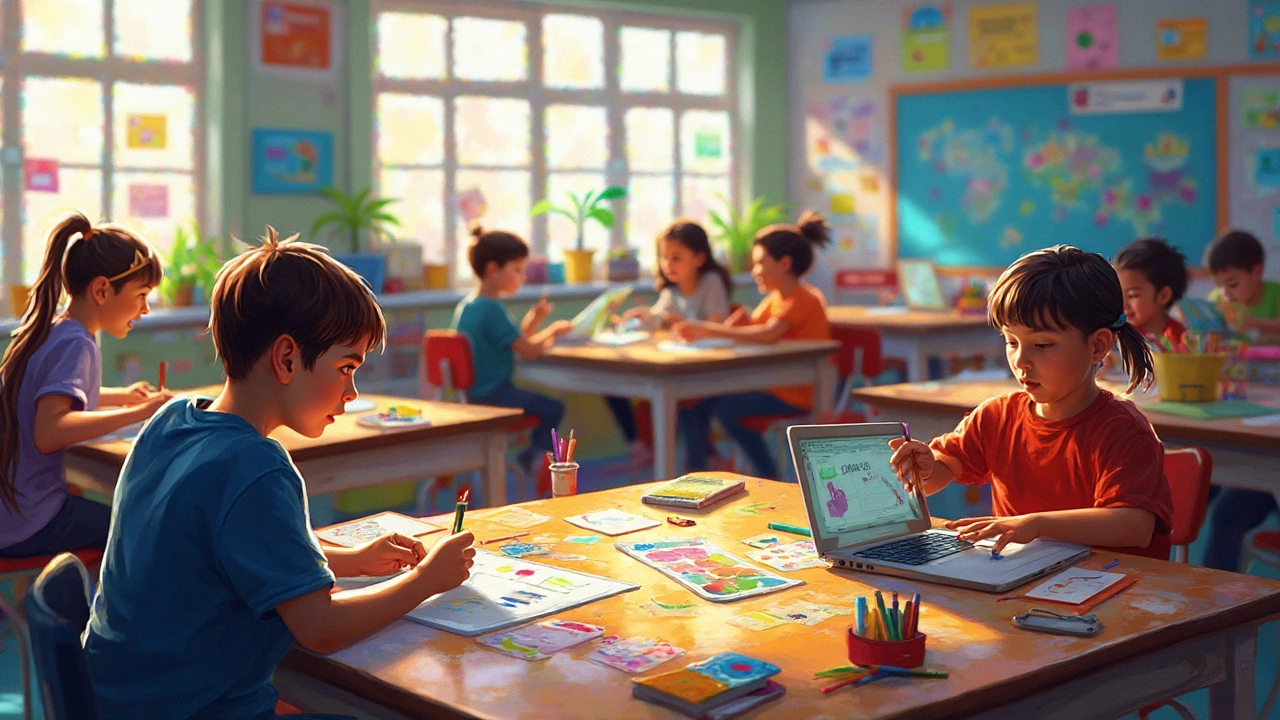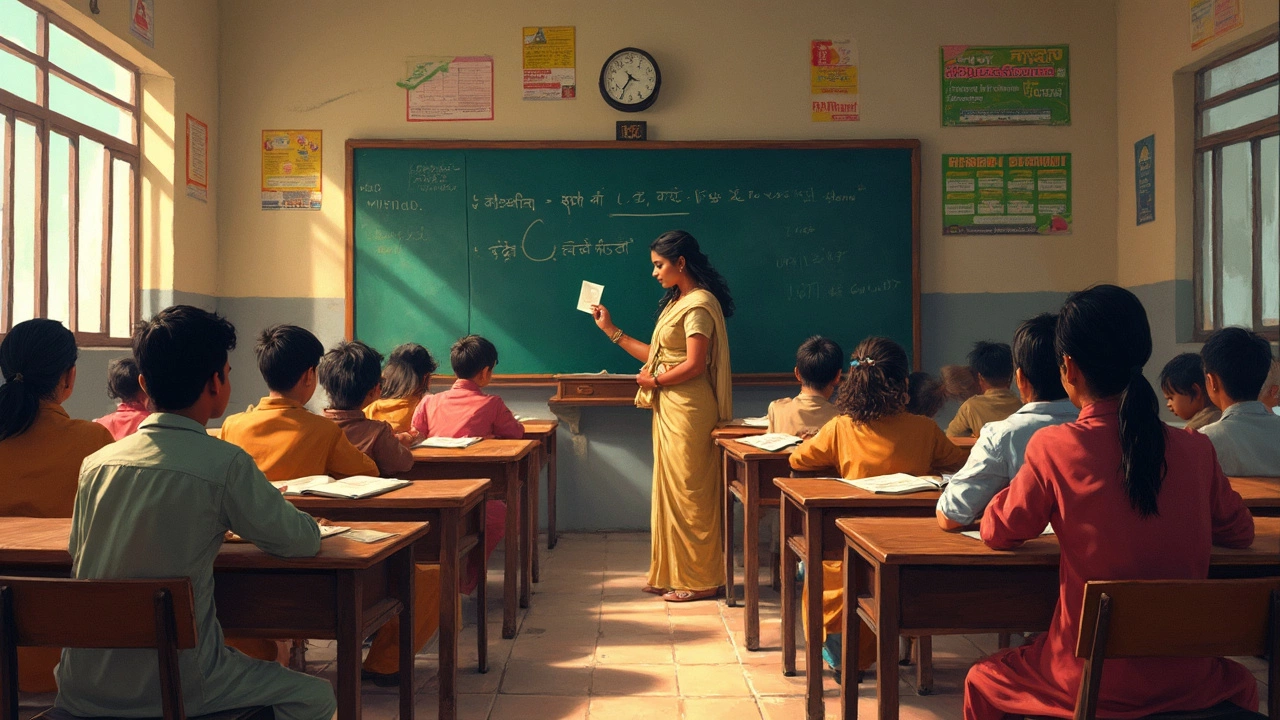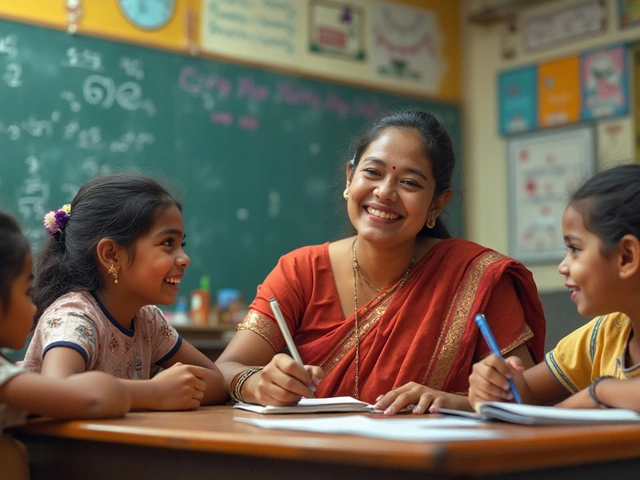
Ever wondered how American schools and CBSE differ? Well, you're not alone. The world of education is vast and navigating through it can feel like an endless maze. So, let's break it down, shall we?
First off, the American syllabus is known for its focus on creativity and flexibility. Kids often have choices in subjects and how they learn—think project-based assignments and interactive activities. It’s about engaging students and nurturing critical thinking.
Now, on the other side of the globe, we have the CBSE syllabus—aimed at building a strong foundation in core subjects. It’s structured and, yes, it can be pretty challenging too. But that rigor is seen as essential in preparing students for competitive exams.
What's the key takeaway here? Well, each system has its unique approach. The American system might suit those who thrive in a less rigid environment, while CBSE might be ideal for students who do well with clear goals and a steady routine. Choosing between them isn't just about picking the easier path; it's about aligning with what best supports a student's growth. Sound confusing? Don't worry, we’re just getting started!
- Understanding the American Syllabus
- Diving into the CBSE Syllabus
- The Flexibility Factor
- Testing and Assessments: A Key Difference
- What Works Best for Different Learners?
Understanding the American Syllabus
So, let's talk about what makes the American syllabus stand out. It’s often praised for its emphasis on flexibility and student choice. Unlike more rigid systems, students here typically have a say in what subjects they study, especially as they move into high school. This means that kids aren't just locked into traditional subjects; they can explore their interests, from arts to technology.
Core Classes and Electives
The core classes usually include subjects like math, science, English, and social studies, but the beauty is in the electives. Electives provide freedom, allowing students to dive into areas like music, drama, or coding. It’s about tapping into that inner passion and nurturing it.
Project-Based Learning
A big part of the American education system is project-based learning. Instead of rote memorization, students work on projects that require critical thinking and creativity. This approach aims to prepare them for real-world challenges by developing problem-solving skills.
Standardized Testing
While the American system allows flexibility in learning, standardized tests still play a role, usually focusing on state-wide assessments. These tests aim to benchmark where students stand within the educational framework. However, unlike some other systems, these scores generally don't define a student’s future.
| Subject | Typical Hours Per Week |
|---|---|
| Mathematics | 4-5 hours |
| Science | 3-4 hours |
| English | 4-5 hours |
| Electives | 4-5 hours |
This structure is all about balance and broad exposure, letting students figure out their strengths while keeping their options open. Not everyone fits into a single educational mold, and the American syllabus understands that.
Diving into the CBSE Syllabus
When you think of the CBSE syllabus, what often comes to mind is rigor and structure. It’s known for providing a strong foundation, especially in subjects like Mathematics and Science, where problem-solving and analytical skills are honed from an early stage.
The CBSE, or the Central Board of Secondary Education, follows the guidelines of the National Council of Educational Research and Training (NCERT). This means that the syllabus is consistent across India, providing a unified standard for educational content. A big plus for families moving between states!
Core Subjects and Focus
The syllabus is not just about academics; it also emphasizes physical education and skill-based subjects. Core subjects such as English, Science, Mathematics, and Social Studies are mandatory till grade 10. CBSE exams are designed to test not just rote learning but understanding, which encourages comprehensive knowledge rather than memorization alone.
Board Exams
A defining feature of the CBSE is its board exams for 10th and 12th grades. These exams are critical and often stress-inducing, but they play a crucial role in admissions to higher studies in India. Many believe this pressure shapes students into disciplined learners.
Practical Approach
In recent years, the board has introduced more project and practical work. This shift aims to engage students beyond textbooks, allowing them to apply learning in real-world contexts. However, the core still remains exam-centric, pushing students to also focus strongly on theory.
The CBSE system might feel intense, but it’s designed to foster a deep understanding of subjects. If a structured approach is something you or your child thrives in, then CBSE might just be the perfect fit.

The Flexibility Factor
When it comes to American syllabus, flexibility is one of its defining features. This system understands that not every kid learns the same way. So, they offer a mixed bag of teaching styles. Traditional exams are still there, but they often take a backseat to project-based learning and continuous assessments.
Choice of Subjects
Take subject choice, for instance. Students often get to pick their subjects, turning it into a 'build-your-own-adventure' kind of experience. You want to mix biology with art? Go ahead. This kind of flexibility encourages students to pursue their interests alongside core academics.
This approach can be seen clearly in high schools, where Advanced Placement (AP) courses allow students to delve deeper into subjects they are passionate about, potentially earning college credits too.
Teaching Methods
Methods in American schools also lean towards interactive and practical learning. Whether it's via group discussions, debates, or hands-on science experiments, students are encouraged to question, explore, and learn by doing.
"Kids learn best when they're engaged and excited. Giving them room to explore their interests keeps them motivated," says Dr. Karen Griffith, an education specialist in California.
Contrast this with the CBSE syllabus, which typically follows a more fixed curriculum. While this ensures a strong academic foundation, it might not cater as much to individual interests and learning styles.
Parents and students who crave a bit more room to breathe in their learning environment often find this system appealing. It's about creating a space where kids can thrive in ways that feel right to them.
Testing and Assessments: A Key Difference
When you think of tests, do pop quizzes or big standardized exams come to mind? That's where the American syllabus and the CBSE syllabus show distinct differences in how they assess students.
American Syllabus Approach
In the American education system, assessments are often a mix of class participation, regular quizzes, and projects. Many schools use a grading system that factors in continuous assessment—meaning students aren't evaluated by a single big test but over time and through various methods. This approach gives kids multiple opportunities to showcase their understanding and skills.
Also, standardized tests like the SATs and ACTs play a role, but they aren't the be-all and end-all. There's a lot of emphasis on demonstrating skills in real-world scenarios through project-based learning, which is quite the opposite of rote learning.
CBSE Syllabus Approach
CBSE, on the other hand, is renowned for its rigorous exams. The academic year culminates with major board exams, especially in grades 10 and 12, that weigh heavily on a student’s final grade. It's all about measuring how well students have grasped the “core knowledge” of subjects.
A key focus here is on scoring high marks. Students are often pushed to excel, and exams can include in-depth questions, requiring detailed written answers. There's a heavy emphasis on textbook learning, but the upside is that students develop a strong command over subjects—a skill that helps in competitive exams later on.
Looking at the Numbers
To provide a clearer picture, here's a simplified comparison:
| Syllabus | Assessment Method | Frequency |
|---|---|---|
| American | Continuous (quizzes, projects) | Weekly/Monthly |
| CBSE | Comprehensive exams | Bi-Annually |
The choice between these systems could boil down to what a student and their guardians prioritize: consistent evaluations and holistic development, or deep academic expertise and exam preparedness.

What Works Best for Different Learners?
Navigating between the CBSE syllabus and the American educational system isn't just about choosing what's easier. It's about understanding what clicks for you or your child. Let’s dive into who might benefit from each.
American Syllabus: A Haven for the Creative Mind
If you're someone who thrives on creativity and flexibility, the American syllabus might be your go-to. Here, learning is centered around projects and hands-on experiences. Students often participate in group projects, debates, and interactive learning sessions. This environment can be a boon for learners who get bored with traditional lectures or love showcasing their understanding creatively.
One striking feature is the diverse subject choices available at an early age, meaning students can explore various interests before zeroing in on a specific path. If you need to accommodate special needs or want to pace out learning, this system provides more room to breathe.
CBSE Syllabus: For the Disciplined and Driven
On the other hand, the CBSE syllabus is a match for those who do well with structure. It's organized, disciplined, and offers a clear roadmap of where you're headed. With a strong focus on mathematics and sciences, it's ideal for students gearing up for competitive exams, a crucial feature for Indian education.
- Fixed curriculum: Ensures that students across India have a uniform learning experience.
- Strong emphasis on theoretical knowledge: Builds a solid foundation in subjects like science and math.
- Dedication to routine: Helps students who like consistency and clear planning.
Choosing Based on Learning Style
So, what’s the bottom line? Know the learner. Whether it's a child or yourself, reflect on what makes learning click. Do you need creative freedom to explore ideas? Or does a structured approach with well-defined objectives align better? At the end of the day, whether it’s American syllabus creativity or the CBSE rigor, find the system that cultivates motivation and growth.
Remember, the ultimate success lies not just in the syllabus but in how it meets the learning style and aspirations of the student. Education is a journey, and choosing the right path can make it worthwhile.





